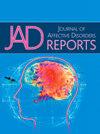Total and subregional thalamic volumes before and after cognitive behavioral therapy in obsessive-compulsive disorder
Q3 Psychology
引用次数: 0
Abstract
Background
Thalamic volumetric alterations are frequently reported in children and adults with obsessive-compulsive disorder (OCD). However, whether successful cognitive behavioral therapy (CBT) is accompanied by thalamic macrostructural plasticity is unclear.
Methods
Twenty-five pediatric (8–19 years) and 53 adult (16–55 years) OCD patients underwent magnetic resonance imaging before and after CBT with exposure and response prevention (CBT with ERP). The data also included 27 pediatric and 37 adult healthy controls that were scanned at similar time intervals. Thalamic nuclei volumes were estimated from T1-weighted images using the longitudinal stream of FreeSurfer's ThalamicNuclei pipeline and aggregated into five subregions (anterior, lateral, medial, pulvinar and ventral). Repeated measures ANCOVAs and linear models were used to investigate pre-post changes in total or subregional thalamic volumes and their associations with clinical response.
Results
There were no significant changes in total or subregional thalamic volumes following CBT with ERP in the pediatric or the adult OCD patients. Moreover, the individual clinical response was not associated with changes in thalamic volume, and baseline thalamic volumes did not predict clinical outcome.
Limitations
Low variance in the clinical outcome and power to detect only moderate-to-large effect sizes.
Conclusion
The results suggest that total and subregional thalamic volumes remain stable following successful CBT with ERP in OCD patients. Hence, thalamus or its subregions may not serve as feasible biomarkers of CBT outcome in OCD.
认知行为治疗前后强迫症患者丘脑总体积和分区域体积的变化
背景丘脑体积改变在儿童和成人强迫症(OCD)中经常被报道。然而,成功的认知行为疗法(CBT)是否伴随着丘脑宏观结构的可塑性尚不清楚。方法对25例儿童(8-19岁)和53例成人(16-55岁)强迫症患者进行暴露与反应预防CBT (CBT with ERP)前后的磁共振成像。数据还包括以相似的时间间隔扫描27名儿童和37名成人健康对照。使用FreeSurfer的丘脑核管道纵向流从t1加权图像估计丘脑核体积,并将其聚集为五个亚区(前、外侧、内侧、枕侧和腹侧)。使用重复测量ANCOVAs和线性模型来调查前后总丘脑体积或分区域丘脑体积的变化及其与临床反应的关系。结果儿童和成人强迫症患者在CBT联合ERP治疗后,总丘脑体积和分区域丘脑体积均无显著变化。此外,个体临床反应与丘脑体积的变化无关,基线丘脑体积不能预测临床结果。局限性:临床结果变化缓慢,只能检测到中等到较大的效应量。结论强迫症患者在CBT联合ERP治疗成功后,总丘脑体积和分区域丘脑体积保持稳定。因此,丘脑或其亚区可能不能作为强迫症患者CBT结果的可行生物标志物。
本文章由计算机程序翻译,如有差异,请以英文原文为准。
求助全文
约1分钟内获得全文
求助全文
来源期刊

Journal of Affective Disorders Reports
Psychology-Clinical Psychology
CiteScore
3.80
自引率
0.00%
发文量
137
审稿时长
134 days
 求助内容:
求助内容: 应助结果提醒方式:
应助结果提醒方式:


